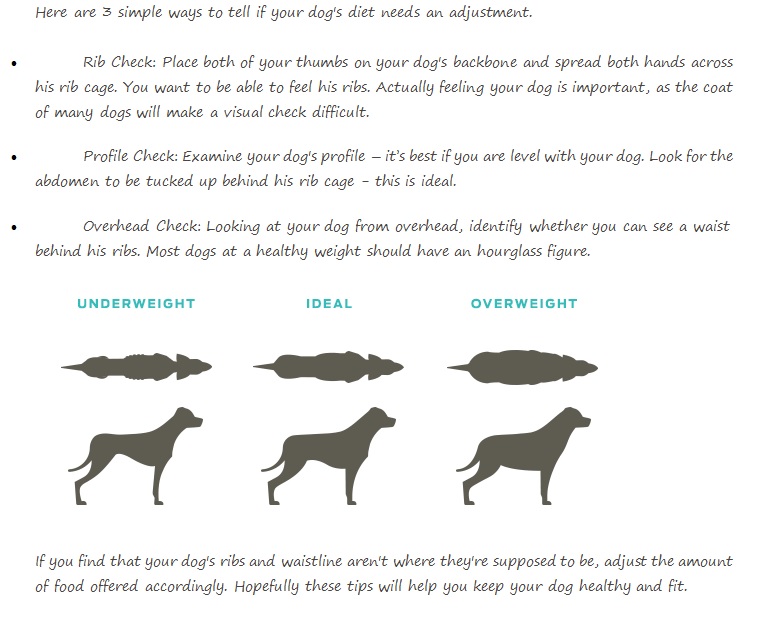Introduction
Puppies grow rapidly during the first six months of their lives and have a large demand for nutrients to meet their changing needs. Diet selection and feeding regimen during this time are critical. Most puppies are fully weaned between seven and nine weeks of age and may enter a new home at this time. When bringing a new puppy into your home, make sure you find out what food your breeder or the previous owner used so you can decide whether to continue to feed this food or transition the puppy to a new diet.
Based on differences in growth rates, the length of time puppies have increased energy and nutrient needs varies among breeds of dogs. The length of time a specific breed of dog needs to be fed a puppy food or increased nutrient density food is directly affected by anticipated growth rate and mature body size. Smaller dogs (less than 20 pounds) should be fed puppy food a shorter length of time (around eight to 12 months). Medium dog breeds (20 to 50 pounds) should be fed a puppy food for about 12 to 18 months. The general recommendation for feeding a puppy food for 12 months is based on the weight range of the average sized dog. However, this recommendation is not accurate for large or giant breed dogs. These dogs (more than 50 pounds) should be fed puppy food for 18 to 24 months. By the time your dog reaches its adult body weight, it has increased its weight from birth by 40 to 50 times.
Nutritional requirements
The diet selected for a puppy should be labeled as complete and balanced for growth for all life stages as proven by the Association of American Feed Control Officials’ animal feeding trials. This is indicated by the nutritional adequacy statement located on your pet food label. Growth is a period of rapid tissue development and results in increased energy and essential nutrient requirements. The changes to nutrient requirements due to growth are fairly similar across all dogs.
Puppy foods are available for different sizes and breeds of dogs. Limited data is available comparing specific breed differences and does not provide a definitive answer regarding the necessity of these foods. While breed-specific differences in nutrient requirements during growth have not been demonstrated, studies have shown there are advantages to feeding rapidly growing puppies specific nutrient concentrations based on mature body weights. Large breed dogs should be fed diets designed to avoid obesity and encourage slow growth rates for proper joint health, while toy breeds of dogs should be fed a maximally digestible diet to ensure that they can meet their nutritional needs despite small stomach capacities.
The calcium and phosphorus concentrations fed to a growing puppy are critical. Not only do these minerals need to be fed in specific amounts, but also in a specific proportion to one another. Inappropriate amounts of calcium (too much or too little) may lead to skeletal deformities. Puppies should never be supplemented with additional calcium or phosphorus when fed a commercial diet designed for growth. This diet is already nutritionally complete and balanced. Additional calcium may cause an imbalance in the calcium-to-phosphorus ratio and result in increased risk of skeletal deformities. Many home-prepared dog foods may be lacking in sufficient calcium. In this case, calcium from the bone is used to meet other metabolic needs for calcium in the body and may result in brittle bones. Puppies should be fed a diet that is properly formulated to contain amounts of calcium and phosphorus in the appropriate ratio to one another.
Energy needs during growth are the highest of any stage of life except for lactating females. Because growth rates are exponential (most rapid in early growth and slower as the animal nears mature body weight), it helps to break the growth phase into two segments. The first phase of growth includes the time from weaning until the animal reaches half of its adult weight. During this phase, puppies need about twice the energy of adult dogs of the same weight. The growth rate slows when the puppy is over 50 percent of its mature weight, so the increased demand for nutrient needs decreases as well. When a puppy reaches 50 percent or half of its mature body weight, the energy requirement is about 1.6 times higher than a mature dog of the same weight at maintenance, and at 80 percent of its mature body weight, energy needs are about 1.2 times maintenance.
The specific equation used to calculate energy requirements for puppies is quite complex. It takes into account the current and mature weight of the puppy to determine where the puppy is on the growth curve. This equation is used by pet food companies to determine the suggested feeding guidelines listed on the pet food label. It may also be used by your veterinarian to determine how much to feed your puppy.
Similar to the energy requirement, the requirements for other nutrients such as fatty acids and amino acids are highest immediately after birth and decrease with a slowing growth rate. Protein is the “building block” of tissues and muscle. Proteins are made up of essential (required from the diet) and nonessential (can be synthesized by the animal) amino acids. During growth, protein requirements are increased to cover both normal cellular turnover or maintenance requirements, as well as to build new tissue. Diets designed for growth should contain higher protein levels than those designed for an adult animal to account for this increased requirement. High-quality and highly digestible proteins should be provided to ensure the animal is getting sufficient amounts of essential amino acids (those required from the diet directly). Choosing a diet with protein provided by high-quality animal proteins (meats and fish) may be beneficial to improve protein quality in the diet.
During growth, increased amounts of some long chain polyunsaturated fatty acids, such as docosahaexanoic acid and eicosapaentanoic acid, have been shown to improve brain and eye development and may improve cognitive function in puppies. These fatty acids are considered conditionally essential, indicating they are required from the diet during times of growth or high demand. Many commercial puppy foods now include increased concentrations of these fatty acids to support brain growth. Long chain polyunsaturated fatty acids may be provided in pet foods by fish oils or other marine products.
Treats should be limited during growth. No more than 10 percent of the animal’s daily intake should be provided as treats. Table scraps or other human foods also should be limited to avoid nutrient imbalances and to ensure proper health of the puppy. If too many treats and human foods are fed, it can drastically increase the intake of energy and calcium and lead to a nutrient imbalance. In addition, feeding too many human foods to a puppy can encourage unwanted behaviors such as begging.
Feeding procedures
How you feed your puppy is just as important as what you choose to feed it. If you choose to feed a diet different from the one the puppy consumed previously, the new food should be introduced gradually and no changes made until after the dog has adjusted to your home for a few days. This is a time of increased stress for your puppy, and rapid diet changes will only increase the stress on its gastrointestinal tract. Ask the breeder or previous owner to provide a small amount of its current diet to allow for a smooth transition. After a few days in your home, you can gradually increase the proportion of the new diet so that your dog is consuming that diet after five to seven days.
The amount of food fed to your puppy each day should be monitored closely. Some owners may choose to feed free choice, or ad libitum, but obesity can be a concern in puppies. Puppies that are overfed to maximize growth rate also have an increased number of total fat cells and higher body fat percentage throughout life. These puppies are at a higher risk of skeletal problems as well. Studies have shown that slight restriction in calories fed will result in increased lifespan of the dog and potentially a delay in onset of some age-related diseases later in life. Puppies that become overweight are more prone to joint injuries and arthritis as adults. Feeding a puppy a set amount of food to slow growth rates does not affect final body size or development.
Portion controlled feeding or measuring daily feed intake is the recommended feeding method for dogs. Feeding a high-quality commercial dog food designed for growth will maintain ideal nutrition. During the rapid growth phase (until your dog reaches 50 percent of its mature body weight), feed your puppy three to four meals per day. Feeding several small meals ensures that the puppy is capable of consuming all of its required nutrients and decreases risk of gastric upset. Once your puppy’s growth slows (when your dog reaches more than 50 percent of its adult body weight), you can decrease the number of feedings per day to two. In some smaller breeds of dogs or dogs that may be prone to low blood sugar, you may want to continue providing three to four per day. By measuring your puppy’s food intake, you will be able to more quickly notice any changes in appetite, which may indicate signs of stress or illness in the puppy.
The amount of food fed should be increased over time to support your puppy’s increased body size. Assessing your puppy’s body condition weekly will allow you to make gradual adjustments to your dog’s calorie intake. A dog that is too thin has easily palpable ribs with little to no overlying fat. A dog that is overweight will have a moderate to heavy layer of fat over the ribs making the ribs difficult to feel. A growing dog that is at an ideal weight will have easily palpable ribs with just a thin layer of fat but not prominent hips. For more on body condition scoring puppies, see the body condition score chart:
 Monitor your dog’s growth rate to ensure it follows the expected pattern of growth for your breed of dog.
Monitor your dog’s growth rate to ensure it follows the expected pattern of growth for your breed of dog.
Additionally, puppies should be provided access to fresh, clean water at all times during the day. Pulling food and water 2-3 hours before bed for the purpose of house training is safe and acceptable.
By choosing a diet designed specifically for a growing puppy that is of high quality, contains readily digestible protein, and has the appropriate caloric density, calcium, and phosphorous for the breed/anticipated adult size of dog, you can ensure adequate nutrition for your puppy. Controlling the amount of food fed each day to control growth and prevent obesity is critical to maintaining proper health of your dog throughout its life. In addition, moderate exercise is important to maintain health and proper muscle development in your dog.
Lisa Karr-Lilienthal, Ph.D. - University of Nebraska-Lincoln
